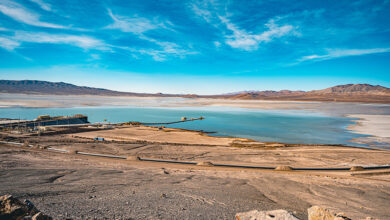a supply squeeze in Cocoa is making chocolate more expensive before Easter

The severe wet weather in West Africa, which accounts for three quarters of world cocoa production, has driven significant supply shortages, with heavy rain, flooding and disease in 2023 pushing prices up 123 per cent in February from a year earlier.
More recently, the El Niño climate pattern has seen a shift to hotter and drier weather in the region, posing additional risks for the 2024 outlook.
Choppy waters
While the impact on production from inclement weather has been a key driver of the surging prices, a global reliance on a small number of geographically concentrated producers has not helped, as regional weather events can disrupt large portions of supply.
Orange juice, for example, has recorded a massive 50 per cent jump in prices in February from a year ago and they are nearly double pre-pandemic levels, having reached a record high in November. That was partly fuelled by a spike in cases of citrus greening disease last year.
And with Brazil, Mexico and the US accounting for more than 60 per cent of orange juice production, weather events in that region typically have implications for global prices, making it harder for consumers to avoid.
Dry conditions in Italy, Greece and Spain are also curtailing the supply of olives, sending olive oil prices surging 70 per cent over the past year to a record high.
While Robusta coffee prices have climbed 55 per cent in February from a year earlier to fresh highs, Mr Bloxham said it was not all bad news for caffeine lovers.
In contrast to orange juice, consumers can substitute between fresh beans, typically to Arabica, and instant coffee, which is usually made from Robusta.
“Arabica growing regions are not exposed to the same supply side challenges as Robusta, and therefore not seeing the same sort of price pressure,” Mr Bloxham said.
Sugar prices are also sky-high, having reached the highest level since 2011 late last year as El Niño wreaked havoc on crops in Thailand and India, with the latter enduring its driest August in more than a century.
That stunted sugarcane crops in the growth phase, while Thailand’s sugar harvest quality and quantity also suffered.
For the US’s key consumer price index, snacks comprise 0.4 per cent, sugar and sweets are 0.3 per cent, while coffee is 0.2 per cent and juices and non-carbonated drinks are 0.7 per cent. All together they make up around 1.6 per cent of the consumer basket.
While that may not seem much, Mr Bloxham warned that “double or triple digit price gains in these products could start to add up” just as central banks were looking to start cutting rates.





